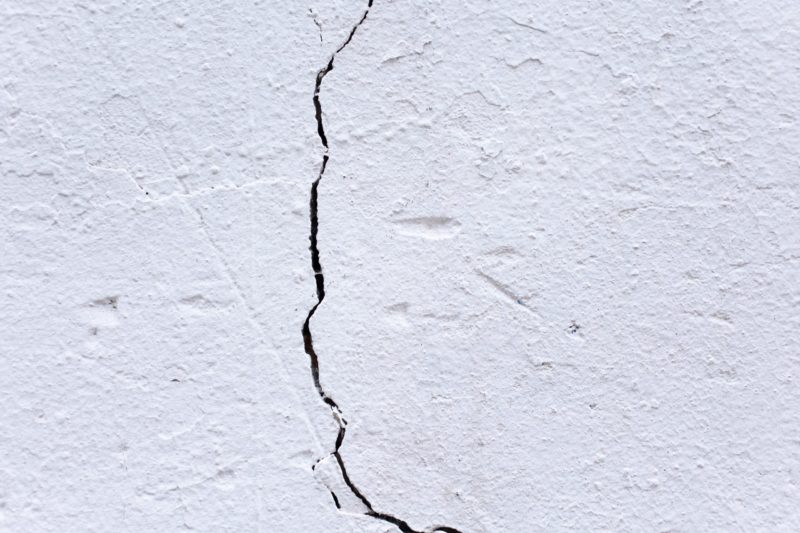For Fixing Cracked or Uneven Walls: A Full Guide to Restoration and Repair

Homeowners often have problems with walls that are cracked or uneven, which is usually a sign of deeper structural issues or bad repair work done in the past. Taking care of these problems quickly and correctly is very important for keeping the home’s structural stability and good looks. This complete guide will talk about what causes walls to be cracked or uneven, what those problems could mean for the home, and how to fix and restore ruined walls to their former glory.
Figuring Out What Causes It
Before fixing walls that are broken or uneven, it’s important to know why they are that way. Wall damage can be caused by a number of things, such as
- Structural Settlement: As the ground shifts, a home’s base will naturally settle over time. This can cause walls to crack or become uneven as the structure adjusts to the change.
- Moisture Damage: Leaks, floods, or high humidity can let water into walls, which can weaken them and cause cracks, bulges, or mold growth.
- Bad Construction: Walls that are weak or unstable and easily cracking or moving can be caused by bad construction methods or low-quality materials.
- Outside Forces: Things like earthquakes, building work nearby, or tree roots can put pressure on walls and cause them to crack or bow.
Finding the Level of Severity
There are different types of cracks in walls, and knowing how bad the damage is is important for figuring out what to do next. Here are some important signs that show how bad the damage to the wall is:
- Hairline Cracks: Small cracks less than 1/8 inch wide are usually just for looks and can be caused by small settlement or changes in temperature.
- Cracks that are more than 1/8 inch wide: Cracks that are more than 1/8 inch wide may mean there are bigger problems with the structure, like base settlement or water damage.
- Bulging or Bowing: Walls that bulge outward or bow inward are signs of major structural instability that needs to be fixed right away to stop more damage.
- Horizontal Cracks: These cracks usually mean there is a problem with the base, and a professional should look at them to see how bad the damage is.
Looking at what this means
Walls that are cracked or not level can affect the home’s safety, stability, and worth in many ways. Ignoring these problems or trying to fix them yourself without the right skills can cost you a lot in the long run. If you don’t fix wall damage, here are some things that could happen:
- Instability in the structure: Walls that are cracked or uneven can weaken the house’s structure, putting people in danger and needing a lot of work to fix.
- Water Damage: Holes or cracks in the walls can let water in, which can cause mold to grow, wood to rot, and building materials to break down.
- Lower Property Value: Damage to the walls that looks bad can make the house look worse and lower its selling value.
- Pest Infestations: Cracks or holes in the walls let pests like termites, ants, and mice in, which can damage the building even more.
Fixing Walls That Are Cracked or Uneven
Fixing walls that are cracked or uneven usually needs a planned method and, in many cases, the help of a professional. Here are the steps you need to take to fix and restore broken walls:
- Inspection: Start by carefully looking at the walls to see how bad the damage is. Watch out for cracks and any signs of bowing or bulging, as well as their size, shape, and position.
- Figure out the real problems: Find out what caused the damage to the wall in the first place, like a sinking base, water getting in through cracks, or bad building techniques. Taking care of these problems is necessary to keep wall damage from happening again.
- Get advice: If the damage is major or structural, talk to a trained structural engineer or building contractor who can look at the situation and suggest the best way to fix it.
- Prepare the surface: Get the damaged area ready to be fixed by cleaning it, removing any loose dirt, and using a bonding agent or primer to help the material stick.
- Crack Repair: Use the right patching material or filler to fill in cracks, making sure it goes deep into the crack and forms a strong bond with the wall surface around it. If you have bigger cracks or damage to the structure, you might want to try epoxy injection or carbon fiber reinforcing.
- Leveling: If you have uneven surfaces or bulges, carefully level the area with plaster or leveling solutions. Make sure to follow the manufacturer’s guidelines and give the item enough time to dry before moving on.
- Finishing Touches: After the fix materials have dried, sand the surface smooth and paint or prime it to match the wall around it. To get the same finish on walls that already have texture, use a texture spray or brush.
- Prevention: To stop more wall damage from happening, fix root problems like water getting into the house, making sure the home’s drainage is better, and making sure the foundation is properly maintained.
In conclusion, walls that are cracked or uneven aren’t just a matter of looks; they can be signs of deeper problems that need immediate attention and professional help. Homeowners can fix damaged walls to their original state and protect the structural integrity and worth of their homes for years to come by figuring out what caused the damage, what it means, and how to fix it in a planned way. Remember that if you’re not sure how to fix a wall safely and effectively, you should always talk to a professional.